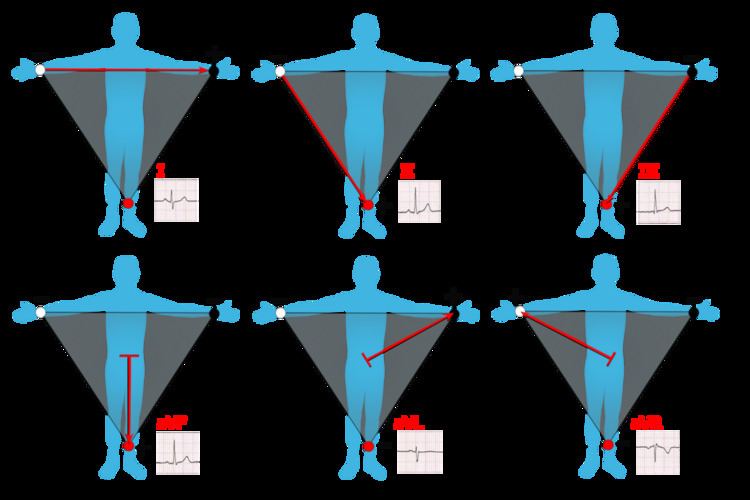 | ||
Einthoven's triangle is an imaginary formation of three limb leads in a triangle used in electrocardiography, formed by the two shoulders and the pubis. The shape forms an inverted equilateral triangle with the heart at the center that produces zero potential when the voltages are summed. It is named after Willem Einthoven, who theorized its existence.
Einthoven used these measuring points, by immersing the hands and foot in pails of salt water, as the contacts for his string galvanometer, the first practical ECG machine.
Lead placements
References
Einthoven's triangle Wikipedia(Text) CC BY-SA
